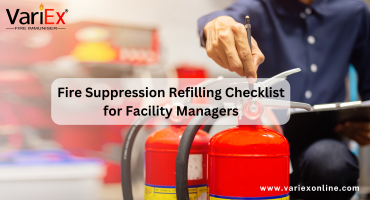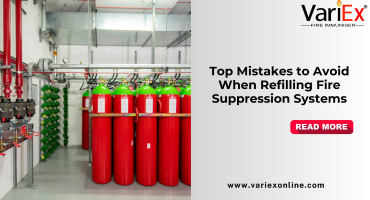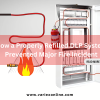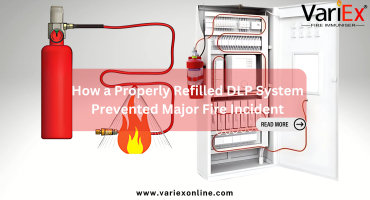![]()
Fire Immuniser
+91-7829629111
Email: info@variex.in
Varistor Technologies Pvt. Ltd.
Block-1, First Floor, Ardente Office One, Hoodi Circle, ITPL Main Road, Bengaluru, Karnataka 560048, IN
What Is A Fire Alarm Control Module
What Is A Fire Alarm Control Module
A Fire Alarm Control Module is a critical component in modern fire detection and alarm systems. It acts as the central hub for controlling, monitoring, and managing various functions of a fire alarm system. These modules are used in both residential and commercial settings to ensure safety, compliance with fire codes, and efficient response to potential fire incidents.
This article dives deep into the functionality, types, applications, and benefits of fire alarm control modules, offering a comprehensive understanding of their role in fire safety.
Introduction to Fire Alarm Systems
Fire alarm systems are essential in detecting fires and notifying occupants to evacuate safely. These systems consist of various components, including sensors, alarms, control panels, and control modules, which work together to provide early warning and activate necessary safety measures.
 What Is a Fire Alarm Control Module?
What Is a Fire Alarm Control Module?
A Fire Alarm Control Module is a device that allows specific control and monitoring capabilities within a fire alarm system. These modules enable communication between the control panel and connected devices, such as smoke detectors, sprinklers, sounders, and notification systems.
Control modules are designed to perform tasks like isolating faults, monitoring external systems, and triggering specific actions (e.g., activating sprinklers or ventilation controls) during a fire emergency.
Key Functions of a Fire Alarm Control Module
1. Device Communication
Fire alarm control modules act as intermediaries between the control panel and other devices. They relay signals to ensure smooth operation and response during emergencies.
2. Zone Isolation
Control modules can isolate specific zones in a building to prevent the spread of fire or mitigate damage to unaffected areas.
3. Triggering Safety Measures
They activate secondary systems like sprinklers, fire suppression systems, and ventilation controls upon detecting fire or smoke.
4. Monitoring Device Status
Control modules monitor the status of devices, such as their operational state and fault conditions, and report this information to the control panel.
5. Emergency Notifications
They play a role in activating audible and visual alarms to notify building occupants during emergencies.
Components of a Fire Alarm Control Module
A typical fire alarm control module includes the following components:
- Microcontroller: Processes signals and manages communication between devices.
- Input and Output Ports: For receiving signals from detectors and sending commands to external systems.
- Power Supply: Ensures uninterrupted operation, often with a backup battery.
- Indicators and LEDs: Provide status updates, such as active alarms or faults.
- Relay Switches: Used for controlling external systems like HVAC or sprinklers.
- Communication Interface: Facilitates data transfer between the module and control panel.
Types of Fire Alarm Control Modules
Fire alarm control modules are categorized based on their functions and applications:
1. Input Modules
These modules monitor and process signals from input devices such as manual call points or smoke detectors.
2. Output Modules
Output modules control external devices like alarms, HVAC systems, and sprinkler systems.
3. Relay Modules
Relay modules act as switches to activate high-current devices such as large motors or emergency lighting.
4. Isolation Modules
These are used to isolate specific sections of the fire alarm system in case of a fault, preventing system-wide disruptions.
5. Supervisory Modules
Supervisory modules monitor devices like fire pumps or suppression systems to ensure they are operational.
How Fire Alarm Control Modules Work
Fire alarm control modules function as part of a networked system. Here’s a simplified workflow:
- Signal Reception: The module receives input from connected devices, such as smoke detectors or manual pull stations.
- Processing: The microcontroller analyzes the input and determines the appropriate response.
- Action Execution: The module sends commands to external devices, such as triggering sprinklers or activating alarms.
- Feedback: The module communicates the status of the action back to the control panel.
Applications in Different Environments
1. Residential Buildings
Control modules are used to manage alarms, sprinklers, and emergency lighting in homes and apartments.
2. Commercial Buildings
In offices, malls, and hotels, control modules integrate with large-scale systems to ensure quick response to fires.
3. Industrial Facilities
They handle complex fire safety measures, such as chemical suppression systems in factories.
4. Healthcare Facilities
Hospitals use these modules to coordinate alarms, sprinklers, and HVAC systems for patient safety.
Installation and Configuration of Control Modules
Installation Steps
- Identify module locations based on building design and fire safety requirements.
- Connect the module to the control panel and power supply.
- Configure input/output devices using the system software.
- Test the module to ensure proper functionality.
Configuration Tips
- Use manufacturer-specific guidelines for installation.
- Ensure wiring meets local fire codes.
- Regularly test modules for functionality.
Compatibility with Fire Alarm Systems
Fire alarm control modules must be compatible with the control panel and connected devices. Compatibility ensures seamless integration and reliable performance. Always verify compatibility when upgrading or expanding a fire alarm system.
Advantages of Using Fire Alarm Control Modules
- Enhanced Safety: Immediate response to fire incidents.
- Customization: Tailored configurations for specific environments.
- Scalability: Easy integration into existing systems.
- Fault Management: Isolate and address faults quickly.
- Regulatory Compliance: Meet local fire safety standards.
Maintenance and Troubleshooting
Maintenance Checklist
- Inspect connections and wiring regularly.
- Test input and output devices monthly.
- Update firmware as needed.
- Replace faulty components promptly.
Troubleshooting Common Issues
- Faulty Communication: Check wiring and power supply.
- Device Malfunctions: Test individual devices for operational status.
- System Errors: Reset the control panel to resolve software glitches.
Regulatory Standards and Compliance
Fire alarm control modules must comply with standards set by organizations like:
- NFPA (National Fire Protection Association)
- UL (Underwriters Laboratories)
- EN 54 (European Standards for Fire Alarm Systems)
Compliance ensures reliability and legal adherence.
Choosing the Right Fire Alarm Control Module
Consider the following factors when selecting a control module:
- System Compatibility
- Building Requirements
- Device Capacity
- Compliance Standards
- Cost and Maintenance
Integration with Smart Technologies
Modern fire alarm systems integrate with smart technologies to offer advanced features, such as:
- Remote monitoring via mobile apps.
- AI-based fire detection.
- IoT-enabled control for seamless automation.
Future Trends in Fire Alarm Systems
The fire safety industry is evolving, with emerging trends such as:
- AI-driven fire detection algorithms.
- Wireless communication between modules.
- Green fire alarm systems with reduced energy consumption.
Conclusion
Fire alarm control modules are indispensable in ensuring fire safety. These versatile devices enhance system functionality, enable efficient monitoring, and activate crucial safety measures during emergencies. By understanding their functions, types, and applications, building managers and safety professionals can implement effective fire protection systems that safeguard lives and property.
Final Say
At VariEx.in and VariexOnline.com, we specialize in supplying and installing top-quality fire fighting systems and equipment. From fire extinguishers to advanced suppression systems, we offer comprehensive solutions tailored to your needs. Our experienced team ensures precise installation and maintenance for optimal safety.
Trust VariEx for reliable fire protection. Contact us online or call 7829629111 to learn more.
"WHAT YOU CAN READ NEXT"
 Read more +24 November 2023 in Fire Extinguisher
Read more +24 November 2023 in Fire ExtinguisherWhat types of fire extinguishers are available for different fire classes?
 Read more +28 April 2025 in Fire Suppression
Read more +28 April 2025 in Fire SuppressionFire Suppression Refilling Checklist for Facility Managers
 Read more +25 April 2025 in Fire Suppression
Read more +25 April 2025 in Fire Suppression




